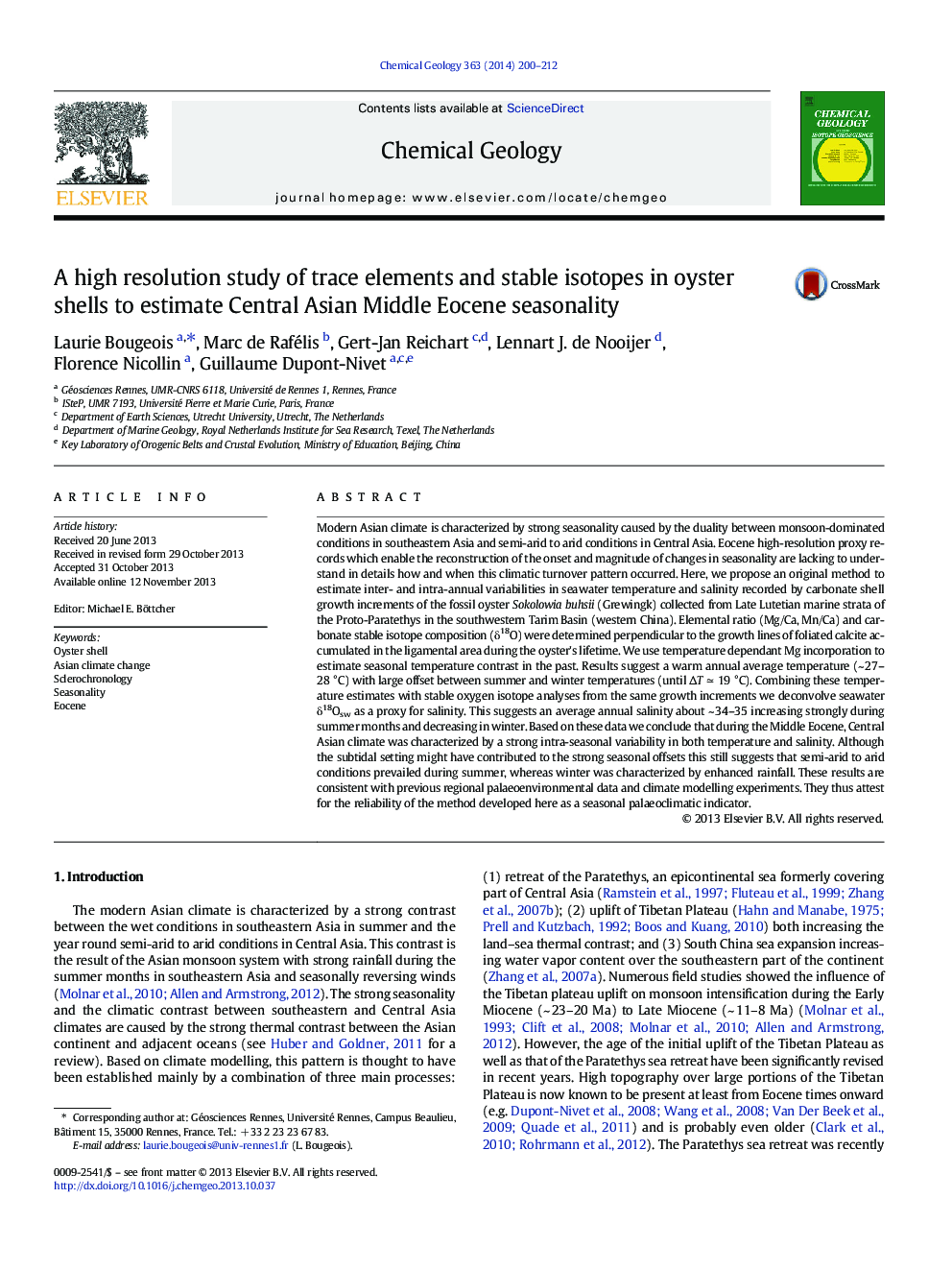| Article ID | Journal | Published Year | Pages | File Type |
|---|---|---|---|---|
| 6436691 | Chemical Geology | 2014 | 13 Pages |
â¢New multi-proxy sclerochronological approach (Mg/Ca, δ18O) on fossil oyster shellâ¢Enables to estimate past seasonal temperatures as well as salinity in epicontinental seaâ¢Strong temperature and salinity seasonality in Middle Eocene Proto-Paratethys seaâ¢Arid climate in summer with more rainfall in winter supports climate models.
Modern Asian climate is characterized by strong seasonality caused by the duality between monsoon-dominated conditions in southeastern Asia and semi-arid to arid conditions in Central Asia. Eocene high-resolution proxy records which enable the reconstruction of the onset and magnitude of changes in seasonality are lacking to understand in details how and when this climatic turnover pattern occurred. Here, we propose an original method to estimate inter- and intra-annual variabilities in seawater temperature and salinity recorded by carbonate shell growth increments of the fossil oyster Sokolowia buhsii (Grewingk) collected from Late Lutetian marine strata of the Proto-Paratethys in the southwestern Tarim Basin (western China). Elemental ratio (Mg/Ca, Mn/Ca) and carbonate stable isotope composition (δ18O) were determined perpendicular to the growth lines of foliated calcite accumulated in the ligamental area during the oyster's lifetime. We use temperature dependant Mg incorporation to estimate seasonal temperature contrast in the past. Results suggest a warm annual average temperature (~ 27-28 °C) with large offset between summer and winter temperatures (until âT â 19 °C). Combining these temperature estimates with stable oxygen isotope analyses from the same growth increments we deconvolve seawater δ18Osw as a proxy for salinity. This suggests an average annual salinity about ~ 34-35 increasing strongly during summer months and decreasing in winter. Based on these data we conclude that during the Middle Eocene, Central Asian climate was characterized by a strong intra-seasonal variability in both temperature and salinity. Although the subtidal setting might have contributed to the strong seasonal offsets this still suggests that semi-arid to arid conditions prevailed during summer, whereas winter was characterized by enhanced rainfall. These results are consistent with previous regional palaeoenvironmental data and climate modelling experiments. They thus attest for the reliability of the method developed here as a seasonal palaeoclimatic indicator.
